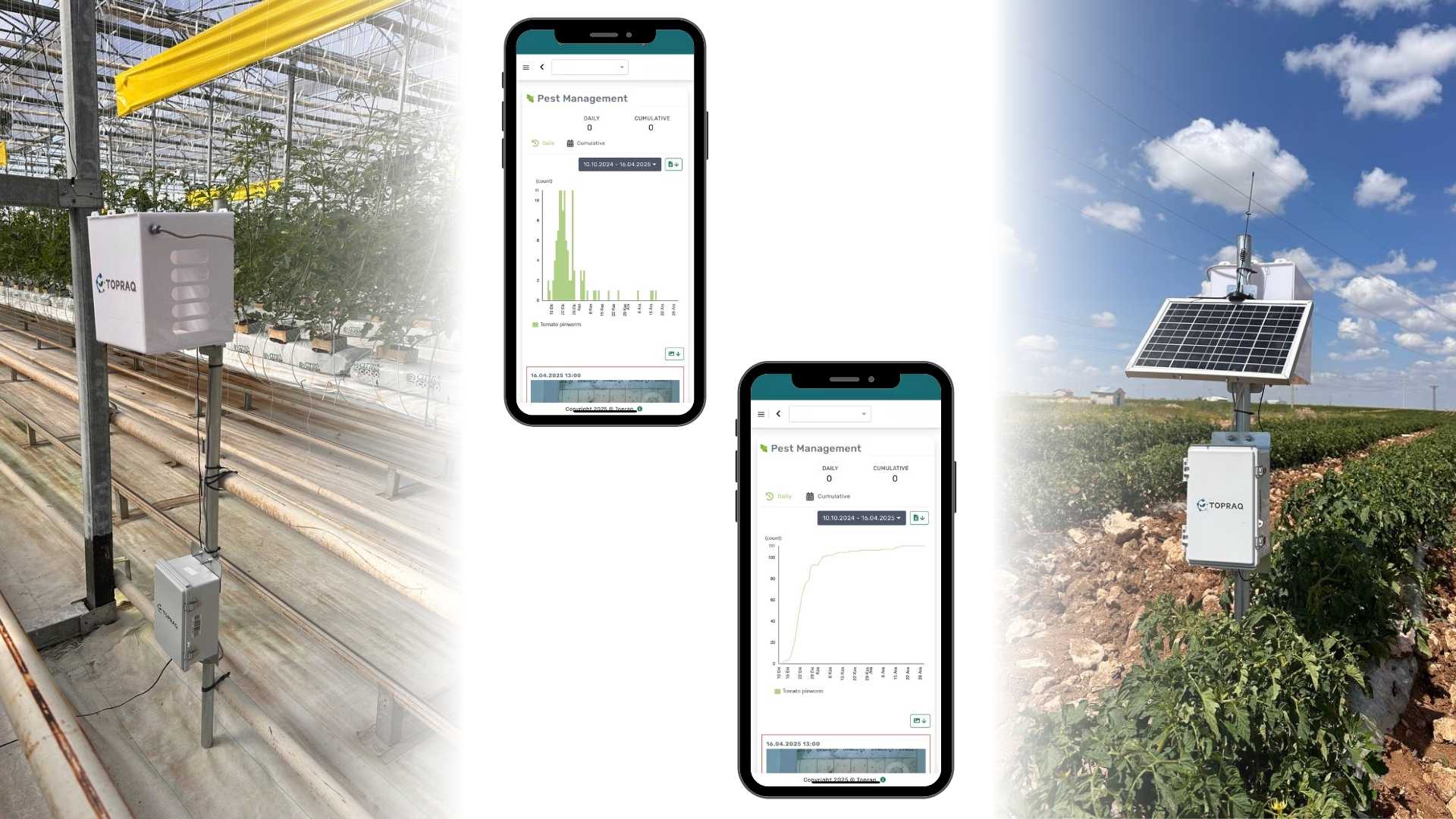The tomato pinworm, often referred to as the tomato leafminer (Tuta absoluta), is a devastating pest for tomato growers worldwide. Left unmanaged, it can rapidly destroy entire crops by burrowing through leaves, stems, and fruits. In this blog post, we’ll explore natural methods for controlling the tomato pinworm, how to get rid of tomato pinworms effectively, and why precision digital pheromone traps like T-Trap are revolutionizing pest control.
What Is the Tomato Pinworm?
The term tomato pinworm is commonly used to describe Tuta absoluta, a small moth native to South America that has spread aggressively across Europe, the Middle East, and parts of Asia and Africa. Also known as the tomato leafminer, this pest lays eggs on tomato plants, and its larvae feed internally — making early detection critical.
Typical tomato pinworm symptoms include:
- Leaf mines and rolled leaves
- Entry holes in green tomatoes
- Frass (insect droppings) near feeding zones
- Deformed fruits and reduced plant vigor
Because Tuta absoluta completes multiple generations per year, infestations can escalate quickly.
Let’s Talk – Share Your Contact Information!
How to Get Rid of Tomato Pinworms?
To get rid of tomato pinworms, an integrated pest management (IPM) strategy is essential. Rather than relying solely on chemicals, growers are now shifting toward natural and environmentally responsible methods:
- Remove and destroy infested plant material
- Use biological controls,
- Implement crop rotation to break the pest cycle
- Deploy pheromone traps for early detection and population control
Among these strategies, digital pheromone traps stand out as one of the most effective methods — and this is where T-Trap makes a difference.
T-Trap: Your Smart Solution for Tomato Pinworm Control
T-Trap is a digital pheromone trap specifically designed to monitor pests like the tomato pinworm / tomato leafminer. It uses species-specific pheromones to lure and count adult moths while recording data in real time.
Benefits of using T-Trap for tomato pinworm control:
- Accurate detection of adult Tuta absoluta moths
- Early warning before population outbreaks
- Reduced need for chemical sprays
- Remote monitoring and data-driven decisions
By combining T-Trap with natural pest control methods, farmers can proactively manage pinworms on tomato plants and protect their crops sustainably.
Damages Caused by the Tomato Pinworm
Whether you call it the tomato pinworm or the tomato leafminer, the damage it causes is severe:
- Leaf mining disrupts photosynthesis
- Fruit tunneling causes deformities and makes tomatoes unsellable
- Plant stress reduces overall yield
- Increased disease vulnerability due to entry wounds
The economic losses can be significant if control measures are not taken early and consistently.
Are Tomato Pinworms Harmful to Humans?
Tomato pinworms (Tuta absoluta) are not harmful to humans. They don’t bite, sting, or spread diseases to people. However, the economic and food security impacts are serious, as infested tomatoes cannot be sold or consumed.
So while not directly dangerous to humans, they are highly damaging to agriculture.
Tomato Pinworm Trap
For effective monitoring, growers need more than just sticky traps. The T-Trap tomato pinworm trap offers:
- Precision pheromone targeting of Tuta absoluta
- Digital image processing for automated counting
- Cloud-based reporting and pest pressure alerts
- Seamless integration into IPM strategies
Whether you’re a smallholder or a commercial tomato grower, T-Trap helps you manage pests naturally, efficiently, and in real time.
Controlling the tomato pinworm (Tuta absoluta) requires vigilance and smart tools. With natural control methods and innovations like T-Trap, growers can reduce chemical dependency, protect the environment, and secure their harvests. Act early, monitor continuously, and stay ahead of this persistent pest.

